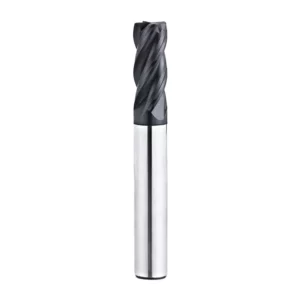End mill ball nose cutters are an essential tool for machining processes in the manufacturing industry, particularly when it comes to working with cast iron. Cast iron is a strong and versatile material, but its hardness poses challenges for machining. To overcome this, choosing the right end mill ball nose is crucial. In this comprehensive guide, we will explore the factors to consider and help you make an informed decision for your specific needs.
When it comes to selecting an end mill ball nose for cast iron, one of the primary considerations is the material composition of the cutter. Solid carbide is often the preferred choice due to its exceptional hardness and wear resistance. Carbide end mills are highly effective in cutting through cast iron, ensuring longevity and performance. Additionally, the coating on the cutter plays a vital role in improving its wear resistance and reducing friction. Look for coatings such as titanium nitride (TiN) or aluminum titanium nitride (AlTiN) for enhanced durability.
Another crucial factor to consider is the flute geometry of the end mill ball nose. For cast iron, a four-flute or six-flute cutter is recommended due to their ability to evacuate chips efficiently. The increased number of flutes prevents chip congestion, reducing the risk of tool breakage and enhancing the overall machining efficiency. Additionally, the flute length should be appropriate for the depth of cut required in your specific application. Longer flute lengths provide better stability, while shorter ones are suitable for shallow cuts.
Furthermore, the tip radius of the end mill ball nose is an important consideration. A larger tip radius offers more strength and durability, making it suitable for roughing applications. On the other hand, a smaller tip radius enhances the precision and surface finish, making it ideal for finishing operations. Depending on your specific needs, choose a tip radius that aligns with your desired outcomes.
In addition to material composition, coating, flute geometry, and tip radius, the helix angle of the end mill ball nose also impacts performance. A higher helix angle promotes efficient chip evacuation and prevents workpiece material from sticking to the cutter. This is particularly important when dealing with cast iron, as the material can be prone to welding to the cutter. Opt for end mills with a higher helix angle to ensure smoother and more efficient cutting.
Now, let’s explore the application areas where these end mill ball nose cutters excel. With their strength, durability, and precision, they are ideally suited for a range of cast iron machining processes. Whether you’re working on cast iron parts for automotive applications, heavy machinery, or even ornamental ironwork, these end mills deliver superior results. Their ability to withstand the demanding conditions of cast iron machining ensures consistent performance and efficiency.
In conclusion, choosing the best end mill ball nose for cast iron is crucial for achieving optimal results in machining applications. Consider factors such as material composition, coating, flute geometry, tip radius, and helix angle to make an informed decision. Solid carbide cutters with appropriate coatings and flute geometries are highly recommended for working with cast iron. By selecting the right end mill ball nose, you can enhance efficiency, precision, and durability in your machining processes. So, whether you’re working on automotive parts or creating intricate ironwork, choose wisely and experience the difference.

